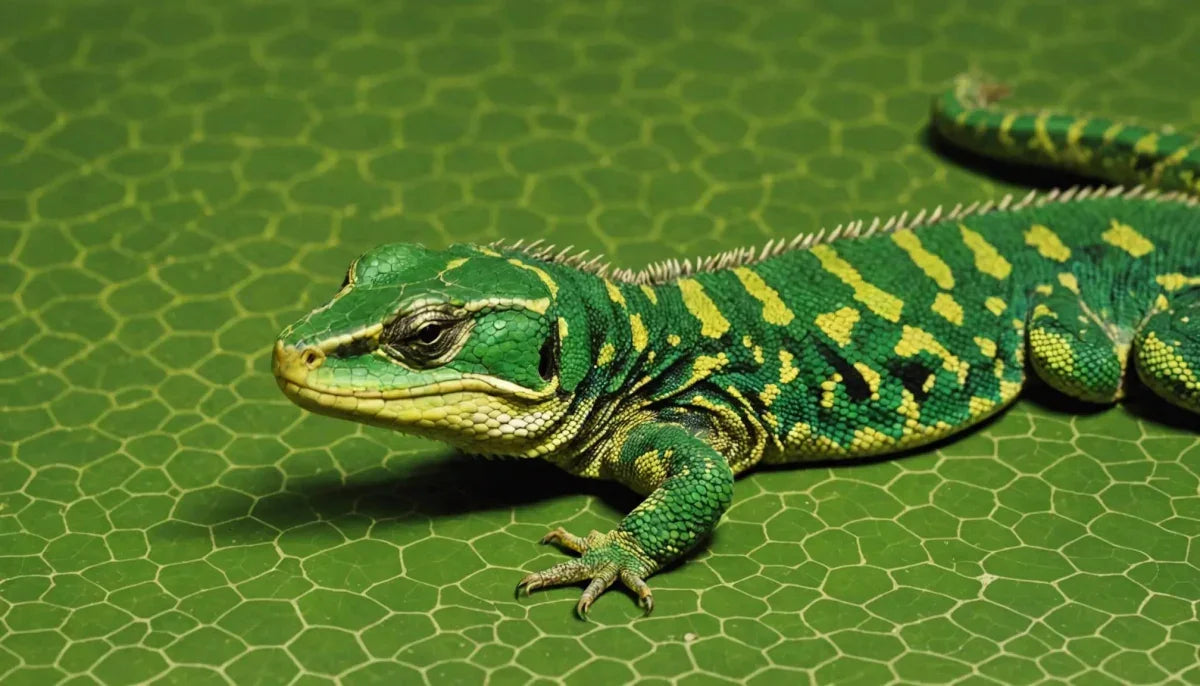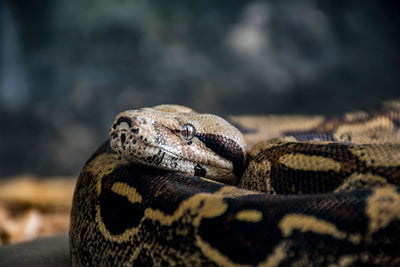Welcome to the captivating world of reptiles

These incredible creatures, with their unique scales, are vital components of our ecosystem. This comprehensive guide is your gateway to unraveling the mysteries surrounding reptile scales. Delve into the intricate structures and functions of these scales to enhance your understanding and care for your scaly companions. Whether you're an experienced reptile enthusiast or just starting out, this guide offers valuable insights into the importance of proper scale care. Explore the role of scales in thermoregulation, protection, and species recognition. Embark on a journey with us as we uncover the secrets and significance of reptile scales. Together, let's ensure the well-being and happiness of these fascinating beings.
Types of Reptile Scales
Reptiles exhibit a fascinating variety of scales that serve multiple purposes in their survival and everyday functions. Let's delve into the intricate world of reptile scales and explore the different types found across various species. From the smooth scales of snakes to the keeled scales of lizards, each adaptation plays a crucial role in their lives. Additionally, we will discuss how these scales have evolved to suit different environments, highlighting the remarkable adaptability of reptiles.
Adaptations of Scales in Different Environments
Reptile scales are not just for protection but also serve as a means of thermoregulation. For instance, the bumpy scales of a Gila monster help it retain moisture in arid environments. In contrast, the large, platelike scales of the crocodile aid in heat absorption, allowing for efficient thermoregulation in cooler environments.
Moreover, the scales of chameleons are a marvel of nature's engineering. These specialized scales contain layers of nanocrystals that can manipulate light, enabling chameleons to change color for camouflage or communication. This unique adaptation showcases the intricate relationship between scales and survival strategies.
In some species, such as the armadillo lizard, scales have evolved to form a protective armor that deters predators. These overlapping scales create a shield-like defense, demonstrating the diverse forms that scale adaptations can take in the reptile world.
Furthermore, the scale patterning on a reptile can provide insights into its habitat and behavior. For example, the geometric patterns on a reticulated python aid in camouflage amidst forest foliage, while the iridescent scales of the green tree python help it blend seamlessly into the canopy.
Understanding the diversity and functions of reptile scales not only unravels the intricacies of their biology but also underscores the importance of these adaptations in their survival. By exploring the world of reptile scales, we gain a profound appreciation for the evolution and beauty of these remarkable creatures.
The scales of reptiles are not only essential for protection and thermoregulation but also play a crucial role in sensory perception. Some reptiles, like geckos, have specialized scales on their toes that allow them to climb smooth surfaces using van der Waals forces, a unique adaptation that aids in their movement and hunting. Additionally, the scales of some snakes, such as pit vipers, have heat-sensing pits that enable them to detect warm-blooded prey in the dark, showcasing the diverse sensory adaptations present in reptiles.
The evolutionary history of reptile scales dates back millions of years, with fossil records providing valuable insights into the development of these protective structures. Ancient reptiles like dinosaurs had scales that varied in size and morphology, reflecting their diverse lifestyles and habitats. Studying fossilized scales can help scientists reconstruct the past environments and behaviors of extinct reptiles, shedding light on their evolutionary paths.
Furthermore, the coloration and patterns on reptile scales serve purposes beyond camouflage. In some species, like the rainbow boa, iridescent scales are used for courtship displays, attracting mates through shimmering colors and intricate patterns. This aspect of scale function highlights the role of visual signals in reptile communication and reproduction.
As we continue to uncover the mysteries of reptile scales, new discoveries reveal the intricate structures and functions of these remarkable adaptations. The study of reptile scales not only enhances our understanding of evolutionary biology but also offers insights into the complex interplay between form and function in the natural world. By appreciating the diversity and ingenuity of reptile scales, we gain a deeper appreciation for the beauty and complexity of these ancient creatures.
Understanding Reptile Scales
Structure and Function of Reptile Scales
Reptile scales are remarkable anatomical features that play a vital role in the lives of these fascinating creatures. Structurally, reptile scales are composed of keratin, the same protein found in human hair and nails. However, in reptiles, these scales serve a multitude of functions beyond mere protection. They aid in locomotion by providing traction, especially in species like geckos that can climb smooth surfaces with ease. Additionally, reptile scales can also act as a defense mechanism against predators, with some species able to puff up their scales to appear larger and deter threats. Furthermore, these scales play a crucial role in thermoregulation, helping reptiles maintain their body temperature by absorbing or reflecting heat as needed.
Growth and Shedding Process
The growth and shedding of reptile scales are intricate processes that showcase the incredible adaptability of these animals. As reptiles grow, their scales need to expand accordingly. This growth is facilitated by the presence of specialized cells that continuously generate new scales beneath the existing ones. Shedding, or molting, is the natural mechanism through which reptiles discard their old scales to make way for the new ones. Shedding is essential for maintaining the health of the skin and ensuring proper growth. Notably, the frequency of shedding can vary among species, with some shedding more frequently during periods of rapid growth or reproduction.
Common Scale Issues and Health Concerns
While reptile scales are resilient, they are not immune to issues that can affect their health. One common problem is dysecdysis, or improper shedding, which can result from issues like insufficient humidity or poor nutrition. Dysecdysis can lead to retained shed, causing discomfort and potentially leading to infections. Injuries to the scales, such as cuts or abrasions, can also occur and require careful attention to prevent complications. Additionally, parasites like mites can target reptile scales, causing irritation and potential health problems if left untreated. Regular health checks and proper husbandry practices are essential for preventing and addressing these scale-related issues.
By gaining a deeper understanding of the structure and function of reptile scales, appreciating the intricacies of the growth and shedding process, and being vigilant about common scale issues and health concerns, reptile enthusiasts can provide optimal care for their scaly companions, promoting their well-being and longevity.
Caring for Your Reptile's Scales
Proper Handling and Cleaning Techniques
Proper handling and cleaning techniques are crucial for maintaining the health and appearance of your reptile's scales. Always handle your reptile gently to avoid causing any damage to the scales. When cleaning, use a soft, damp cloth to gently wipe away any dirt or debris. Avoid using harsh chemicals or rough materials that could harm the scales. Regular handling not only helps in keeping your reptile comfortable but also allows you to inspect its scales for any abnormalities or signs of health issues.
Maintaining Optimal Humidity Levels
Maintaining the right humidity levels in your reptile's habitat is essential for healthy scales. Different reptile species have varying humidity requirements, so it's important to research and understand the specific needs of your pet. Use a hygrometer to monitor humidity levels and make adjustments as needed with misting systems or humidifiers. Providing proper humidity levels not only aids in shedding but also contributes to overall skin health and hydration.
Dietary Considerations for Healthy Scales
A balanced diet plays a significant role in the health of your reptile's scales. Ensure that your pet is receiving the proper nutrients, including vitamins and minerals essential for scale health. Consult with a veterinarian or reptile specialist to create a diet plan tailored to your pet's species and individual needs. In addition to a staple diet, consider offering occasional treats like calcium-rich insects to support scale regeneration and overall health.
Preventing Scale-related Health Problems
Preventing scale-related health problems is key to ensuring your reptile's overall well-being. Keep an eye out for signs of shedding issues, such as retained shed or stuck shed, which can lead to infections. Provide appropriate shedding aids and a humid hide to help your reptile shed properly. Regularly inspect your pet for any abnormalities or signs of scale rot, and seek veterinary care if you notice any concerns. Remember that maintaining a clean habitat, proper nutrition, and regular veterinary check-ups are essential in preventing various scale-related health issues and ensuring your reptile's scales remain healthy and vibrant.
Importance of Environmental Enrichment
In addition to proper handling and diet, environmental enrichment is crucial for your reptile's scale health. Providing a stimulating environment with adequate space, hiding spots, and climbing opportunities can help reduce stress and promote natural behaviors, which in turn positively impact your reptile's overall well-being and scale condition.
Common Scale Problems and Solutions
Understanding common scale problems that reptiles may encounter is essential for proactive care. Issues like mites, fungal infections, or scale injuries require prompt attention. Learn to recognize the symptoms of these problems and consult with a reptile veterinarian for accurate diagnosis and treatment. Being proactive and observant can prevent minor scale issues from escalating into more significant health concerns.
Seasonal Considerations for Scale Care
Different seasons can affect your reptile's scale health. During winter, when humidity levels might drop due to indoor heating, consider adjusting your misting frequency or using additional humidifiers to maintain adequate moisture levels. In summer, monitor for overheating, as excessive heat can lead to dehydration and impact scale quality. Be mindful of seasonal changes and make necessary adjustments to your reptile's care routine to support healthy scales year-round.
By incorporating these additional insights into your reptile's scale care routine, you can ensure that your pet not only looks great but also thrives in a healthy and enriching environment. Remember, attentive care and regular observation are key to promoting optimal scale health and overall wellness for your scaly companion.
Conclusion
Understanding the intricate world of reptile scales is crucial for any reptile owner looking to provide the best care for their scaly companions. By learning about the different types of scales, their functions, and how to maintain their health, we can ensure that our reptiles thrive in their environment. Remember, proper hydration, diet, and habitat conditions are key to keeping those scales healthy and vibrant. Let's continue to appreciate the beauty and importance of reptile scales in the overall well-being of our reptilian friends.






